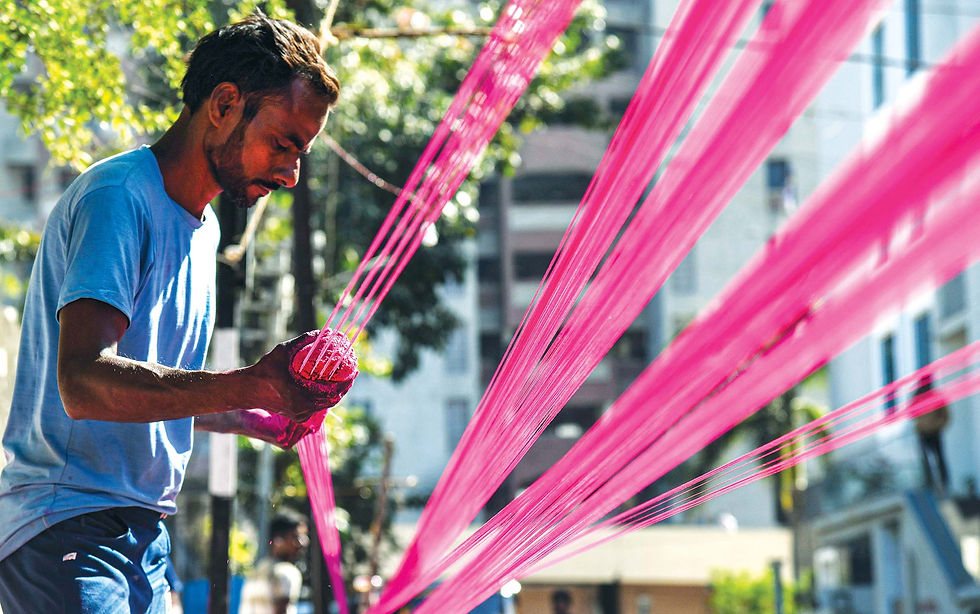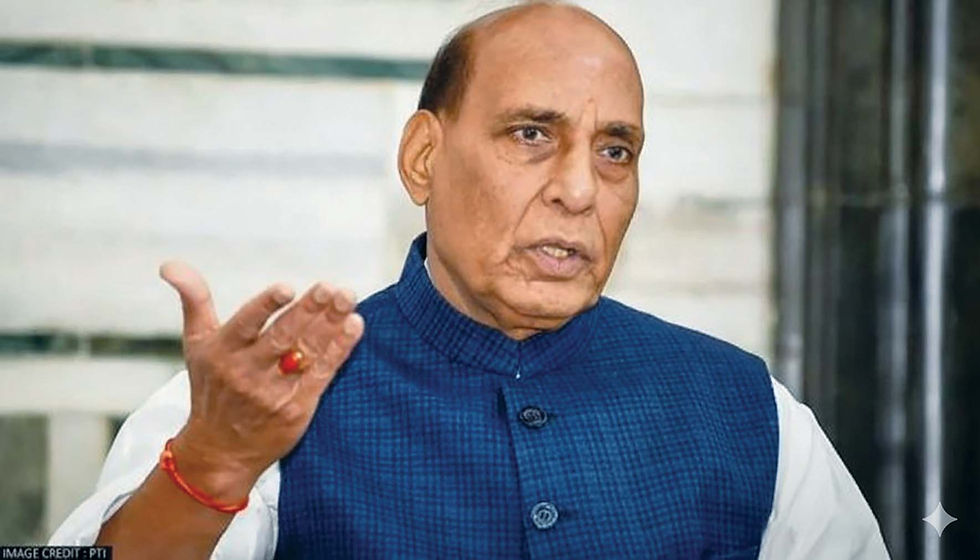The Republic of Graft
- Commodore S.L. Deshmukh

- Apr 14
- 4 min read
Corruption in India is no longer an exception but the very framework that holds the system together.

A Delhi High Court judge under investigation. Police officers caught red-handed by the CBI. Crumbling buildings killing dozens in illegal colonies. These aren’t scattered headlines from a bad news week but symptoms of a deeper national malaise. In recent years, India has been roiled by a string of corruption scandals that have exposed the rot within its institutions. The judiciary, the police and even the military have all been touched by scandal. But the real shock is not in the revelations but the collective shrug they provoke.
Corruption in India no longer feels like an emergency. Like crumbling infrastructure, we have learned to be inured to it, living with it the way we live with potholes and power cuts by grumbling, adjusting, and finally forgetting.
Consider, for instance, the once-revered domain of national defence. Generally insulated from the taint of scandal, the military establishment had enjoyed a reputation for uprightness, if not always efficiency. The Bofors scandal of the 1980s, involving kickbacks in the procurement of 155mm howitzers from a Swedish manufacturer, marked one of the earliest tremors, rattling Parliament while redefining the public’s understanding of just how high corruption could reach. Then came the Kargil coffin scam in the late 1990s, when senior officials were accused of manipulating the purchase of flimsy aluminum caskets and body bags from the United States in the aftermath of war - a macabre reminder that even death could be monetized. These were not isolated transgressions but warning flares in a sector where opacity is often justified in the name of national security. The challenge lies in preserving the sanctity of defence while piercing the veil behind which profiteering so often hides.
The police, who are tasked with upholding law and order, have become the most flagrant violators of the same. In 2024 alone, several Delhi police officials were arrested for corruption. Traffic violations, FIR registrations, case investigations - these routine matters are transactional. The rot is not new, but it is now more institutionalized than ever before. A culture of bribery has metastasized, nurtured by political interference and public resignation. This is a system in which law enforcement is often indistinguishable from organized extortion.
And then there is the judiciary, meant to be the final recourse for justice, the moral compass of the Republic. When that compass spins wildly, what hope remains? The problem is not just limited to a few errant verdicts. It is systemic. Adjudicatory corruption - verdicts influenced by external pressures - is compounded by administrative malfeasance, nepotism, and what some call the ‘Uncle Judge Syndrome,’ where lawyers appear before their own relatives. Between 2017 and 2021, over 1,600 complaints were filed against judges. Almost none led to action. When Justice Yashwant Varma of the Delhi High Court came under scrutiny, the collective gasp felt genuine, but it also felt familiar. We’ve been here before, and we’ve left unchanged.
The causes are deeply rooted: opaque appointments, a collegium system that defies accountability, political meddling and a general tolerance for the greasing of palms. These are not glitches but features of a system that has quietly decided that ethics are optional.
In this landscape, the words of Nobel laureate RigobertaMenchú feel less like a warning and more like a prophecy: “Without strong watchdog institutions, impunity becomes the very foundation upon which systems of corruption are built.” In India today, impunity isn’t an aberration but policy, practice and in many places, a regrettable tradition.
This is not to say that India is uniquely or irredeemably corrupt. But its corruption is unique in scale, brazenness and endurance. It cuts across sectors and social classes. It spares no one - not the poor, not the rich, not the uniformed, not the robed. And in a perverse inversion of democracy, the powerful are almost always exempt from consequences.
What is most insidious about corruption in India is how normal it has become. It is in the Rs. 500 slipped to a government clerk to speed up paperwork. It is in the routine cash envelopes during elections.
It is in the knowing shrug when a politician is exposed, again, for siphoning funds. But normalization is not destiny. It is a choice made every day by institutions and individuals alike. And like any volcano, corruption gives signs before it erupts. We would do well to pay attention.
Integrity, as Angel Gurría of the OECD once remarked, must be “part of the culture… taught as fundamental values.” That is the real battle ahead. Not just in jailing the corrupt, but in unlearning the belief that corruption is inevitable. Reform is not a question of drafting new laws but about enforcing the ones we already have, building systems that protect whistleblowers, ensuring independence of oversight bodies and nurturing public outrage into civic pressure.
India stands at a precipice. Below it simmers the molten fury of decades of impunity. We can either douse the flames or wait for the inevitable eruption.
(The author is a naval aviation officer and geo-political analyst. Views personal)





Comments